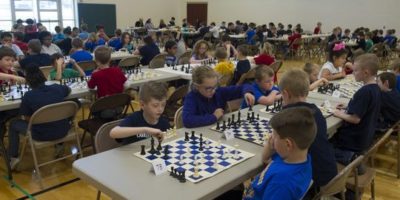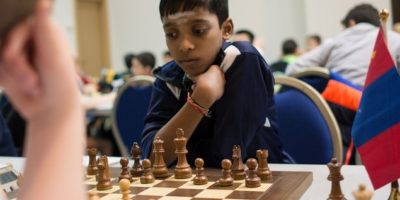Indian Chess Suffers A Stalemate
Over two decades ago when Viswanathan Anand emerged as one of the best in the world of chess. At the time, he was already the best in Indian Chess. Even today he lives up to the title of the “King of 64 Squares”. No doubt, he was, is and will be one of those players that changed the way people looked at the game. He is the pioneer of the sport in India, and some would even say that Chess is synonymous to Anand in the country.
During Anand’s dominance in India and the world, the country produced many GMs (Grandmasters), IMs (International Masters) and WGMs (Women’s Grandmaster). However, not one of them has been able to challenge or even come near to the “King of 64 Squares” from his own country.
India produced numerous stars like Koneru Humpy (youngest Indian woman Grandmaster), Tania Sachdev (IM and WGM) and more recently Parimarjan Negi (second youngest Grandmaster). In spite of such a huge potential and record-breaking achievements in the younger circuits, these players did not succeed in coming close to what they were expected to achieve. The problem in these and many other instances is the lack of vision.
AICF’s Limited Vision
During the time when Anand emerged as a world-class player, AICF (All India Chess Federation) was not so much an active body. The Chennai Tiger was once asked about the role played by the AICF during his development, to which he smiled and said, “AICF has never interfered with my chess”. Well, that was smart of AICF, would you not agree? But, that also perfectly sums up the sad state of things.
The times have changed and the AICF can take claim of the numerous rated events that are organized in India. And, the international awards and achievements of the Indian youngsters helps AICF put a credible face in front of the world. However, the infrastructure for Chess in India still has a lot to improve. And, the players with potential need to be provided with the necessary financial assistance and improved training mechanisms in order to efficiently take the next step forward.
Indian chess players aim to become a Grandmaster
A slight tweak to the national championship rules, engaging foreign coaches and corporate sponsorship will bring glamour to the game. That in turn will help in transforming the chess scenario in India. As witnessed in the case of sports like Football (Indian Super League), Kabaddi (Pro Kabaddi League) and Badminton (Premier Badminton League). Looking at the demographic profile of the country, chess experts say that India has the potential of becoming the next USSR (former Soviet Union) – in producing Grandmasters. The strength of the erstwhile Soviet Union is known, they dominated the world chess scenario for most of the later half of the 20th century and were only challenged by the arrival of Bobby Fischer.
This could sound as a very positive situation, but if one takes a closer look it could also be the biggest problem surrounding Indian chess at the time. It is pretty common to hear the words, “I want to become a Grandmaster”, from the young players in the country. But, if you ask them, “what after becoming a Grandmaster”, it is likely that you would receive a long pause in return to the question.
Taking the next step forward
The players with huge potential on many instances tend to settle down after earning the Grandmaster title, instead of trying to take the next step forward. While many others begin to struggle after the juniors and never really succeed in adapting to the game at the highest level.
For India to overcome this stalemate, it needs to deal with changing the whole mentality of the younger players. And, that is where the AICF could play the most vital role by ensuring proper mentor-ship to these young minds. To change the aim from achieving the Grandmaster norm to becoming the world champion is a herculean task. However, given the potential of the Indian chess players it may not be too distant a dream to achieve.






